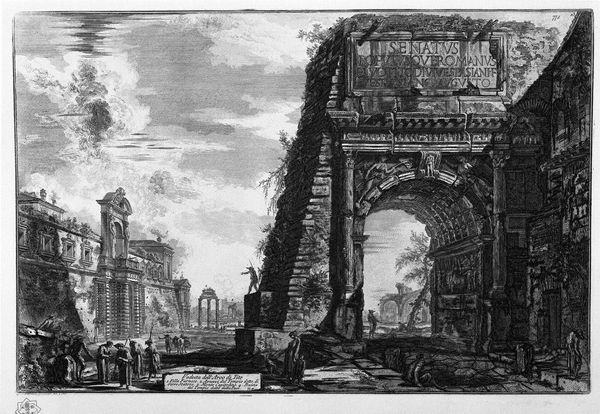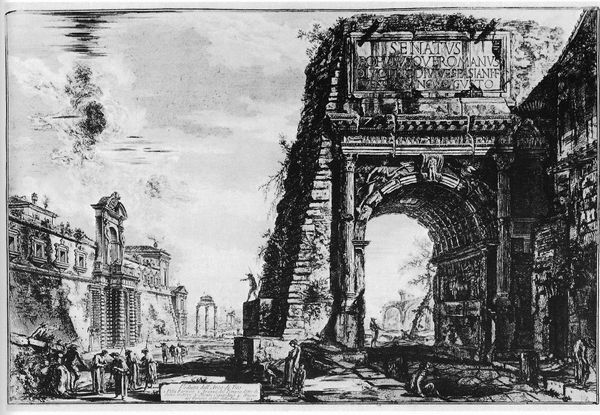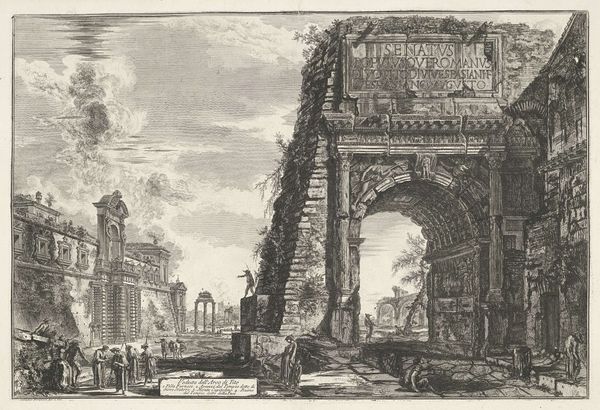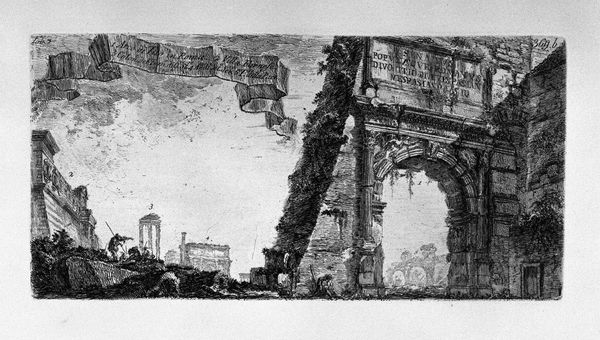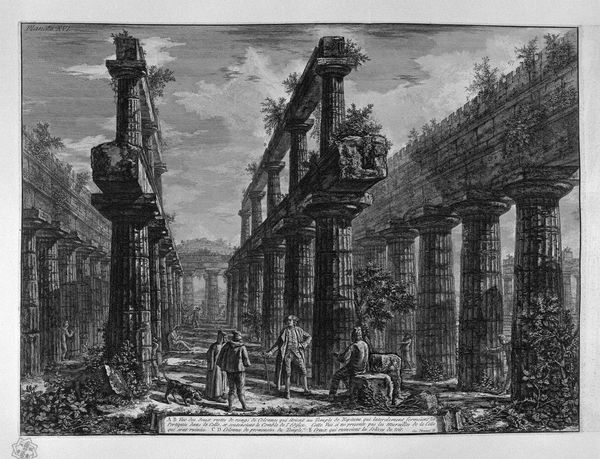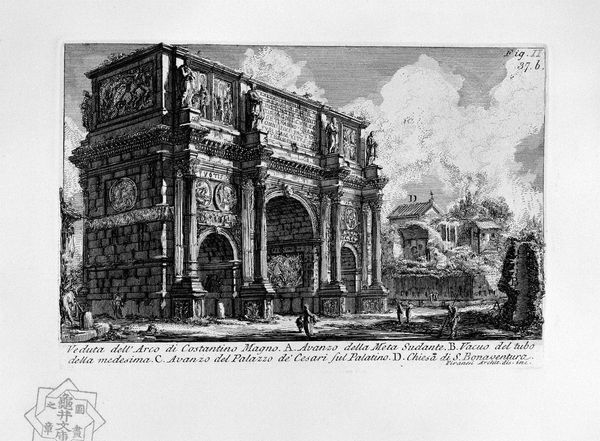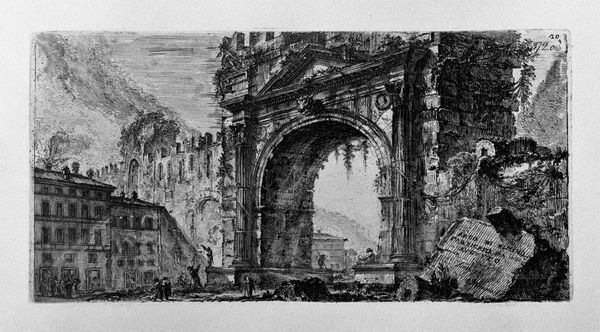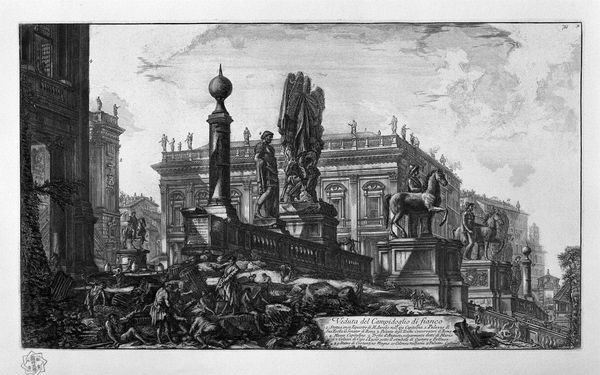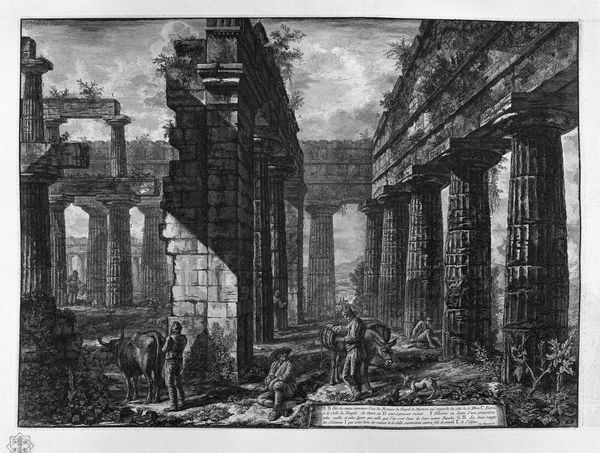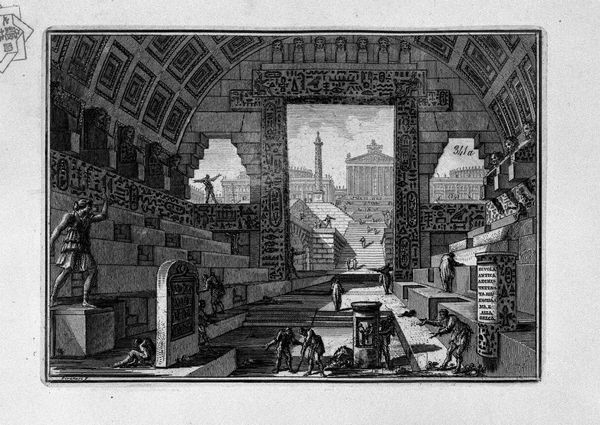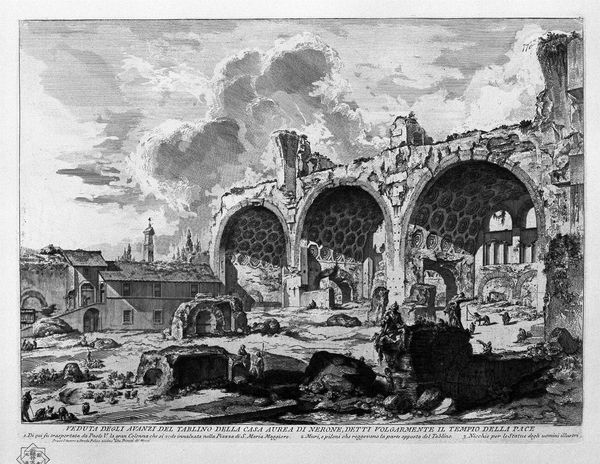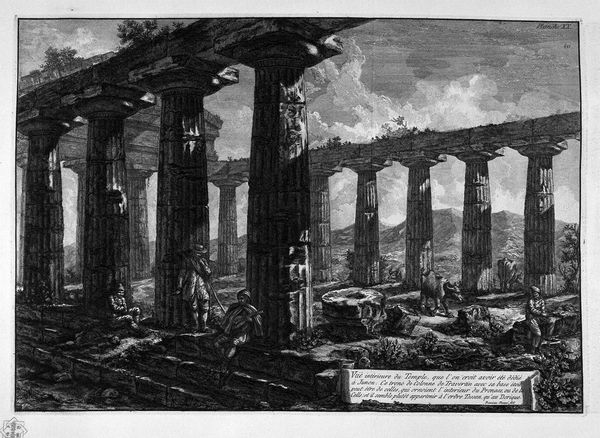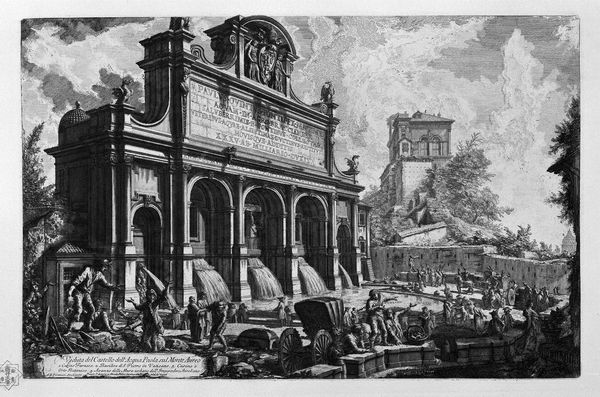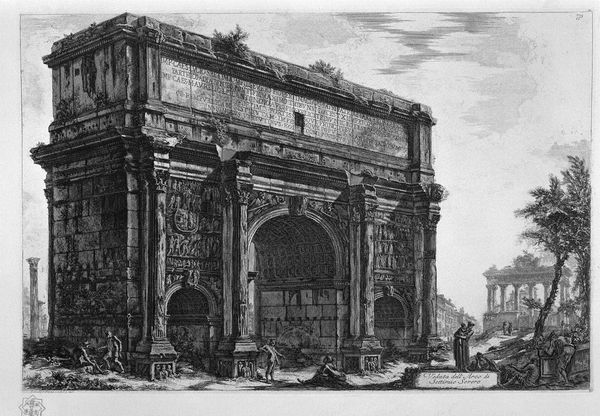
print, etching, engraving, architecture
#
neoclassicism
# print
#
pen sketch
#
etching
#
greek-and-roman-art
#
landscape
#
pen-ink sketch
#
engraving
#
architecture
Copyright: Public domain
This is Giovanni Battista Piranesi's "Arco de Tito," an etching made in Italy during the 18th century. Piranesi used his art to comment on the social structures of his time. Note how Piranesi depicts the Arch of Titus, a monument celebrating Roman imperial power, as partially overgrown and in ruins. This wasn't just a literal depiction; it was a statement about the decline of Roman authority and the passage of time. The figures in the foreground, dwarfed by the monument, underscore a sense of historical distance. Piranesi's Rome was one of contrasts: the grandeur of the past juxtaposed with the realities of the present. To fully understand Piranesi, we might turn to travelogues, architectural treatises, and the records of artistic academies. These sources help us decode the complex relationship between art, power, and historical consciousness in 18th-century Italy.
Comments
No comments
Be the first to comment and join the conversation on the ultimate creative platform.
